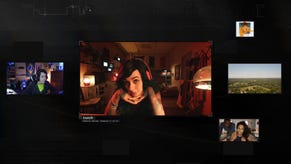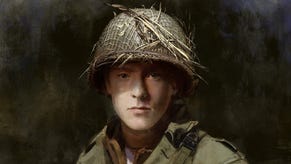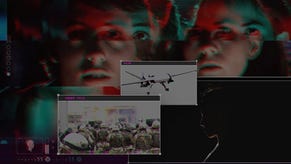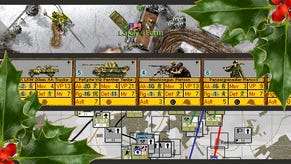Wot I Think: Simulating War by Philip Sabin
Teach Yourself Wargame Design
To Professor Philip Sabin a wargame isn't just a plaything, a contraption for turning weapons-grade boredom into 24-carat fascination. To the man that teaches the World War Two in Europe, Warfare in the Ancient World, Fighting in the Air, and Conflict Simulation modules at King's College, London, high-quality historical strategy games are invaluable research and educational aids, as useful in their own ways as conventional written histories. In his latest book, Simulating War, he explains why his Strategic Studies students are often to be found hunched over hexgrids, and details a design approach that, though geared towards the creation of board wargames, contains much that will interest and inspire computer wargame creators.
When you spend a significant portion of your leisure time in the company of digital diversions like Combat Mission, Command Ops and Graviteam Tactics, it's tempting to think of board - or 'manual' as Sabin likes to call them - wargames, as obsolete... bumbling Gladiators in a sky full of darting Bf 109s. Simulating War is a powerful reminder that games you can paw, sneeze over and spill tea on still have advantages over their less tangible descendants.
To Sabin, manual wargames are cheaper, more malleable, more democratic, and more accessible than computerised equivalents. While the author acknowledges the solitaire play, FoW, command simulation and networking advantages of series like Airborne Assault, Hearts of Iron, Combat Mission, and Decisive Battles, and frequently uses flight sims in his classes...
“First Eagles allows me to explain basic fighter manoeuvres in the context of World War One, and to show how well-handled scouts could attack two seaters from the blind spot beneath their tail. Battle of Britain II lets students experience something of the massed air combats of 15 September 1940 from the contrasting perspectives of a British and German fighter pilot and a German bomber gunner, and it conveys wonderfully the problem of distinguishing friend from foe in these tangled and fast moving engagements... I employ IL2 to let students see the difficulties that inexperienced German pilots had in finding and strafing Allied airfields during Operation Bodenplatte.”
...his firm belief that students learn as much from fashioning simulations as playing them, means roughly half of Simulating War's 350 pages is devoted to the science and art of designing simple yet resonant board microgames. Chapters covering subjects like accuracy vs. simplicity, simulation research, component design, and command dynamics explore everything from deciding on a game's turn structure, and map grid pattern, to determining how much randomness is appropriate for your combat resolution system.
Even if you've been playing and designing wargames for years, the incisive analysis of the pros and cons of the various approaches, is sure to illuminate; the emphasis on simplicity, elegance, and - above-all - robust historicism, is bound to cause you to look afresh at any designs currently on your drawing board. The same bulky manuals and overflowing counter trays that render some manual wargames impractical in a classroom context (The author insists his students work within strict 100 counters, 17” x 22” map, and 7500-word manual design guidelines) turn many promising PC wargames into wearying labour camps. Sabin argues, extremely persuasively, that less is often more in the world of wargame design.
Eight of Sabin's own bijou creations are described in detail in the second half of the book. Along with full rules, and short illustrative AARs, there are notes in which the author explains design decisions, objectives, and the testing process behind titles like Block Busting (a company level WW2 FIBUA sim played on a 9 x 6 square grid), and Roma Invicta? (Hannibal's Italian campaign played out on map divided into 13 regions). We learn about the inevitable compromises that come with the relative simplicity, but also see how very subtle aspects of warfare can be explored in crisp, DIY designs.
Big Week, a recreation of the last day of the 'Big Week' Allied air offensive, forces US players to grapple with tough escort provision dilemmas, and German ones to confront difficult scramble timing and pursuit questions. Hell's Gate (a Korsun Pocket sim played on 20km hexes) illustrates why pocketing was such a common feature of land warfare in WW2 and “helps students understand the fundamental trade-off between massing forces for increased combat effectiveness (whether attacking or defending) and spreading troops more thinly to guard an extended front.”
In Fire And Movement - “a simple grand tactical simulation of an attack by a British infantry battalion in 1943-45” Sabin “rejects the fetish for detailed simulation” creating “a radically simpler model” in which terrain, manoeuvre, firepower, and ammo usage are all sketched with the lightest touches yet end-up feeling strikingly credible. Simplicity isn't a panacea in wargame design, but in the hands of designer as well versed in military history and wargame design as Sabin, it can feel awfully like one.
The author admits he'd love to see serious manual wargames shelved alongside serious military history in high street bookshops (he cites several examples where board wargames actually provide more trustworthy information than well-regarded written histories). Given this desire, it's a pity that the book doesn't come with easily extracted examples of one or more of the eight games. Colour reproductions of maps and counters are included, but with boards spread across several pages, and counters often printed on map reverses, assembling a usable game would require fiddly scanning or serious biblio-brutality. Yes, you can download printable game assets via this website or buy Victory Point Games' deluxe version of Hell's Gate but a tear-out-and-play example would have complimented Sabin's accessibility agenda far more naturally.
In between the (slightly pointless) plates, the revealing design notes, the pithy rules summaries and the wealth of practical advice, Simulating Wars contains clusters of highly readable pages on the morality of wargaming...
“Board wargames are abstract reflections of a few of the physical dynamics of particular armed conflicts, and their devotees tend to be peaceable, intelligent and often rather apolitical individuals who read widely about all aspects of military affairs. There is no sense, as some have argued with violent video games, that playing the simulations fosters real-life aggression and desensitises users to the moral gravity of actual warfare and killing. Indeed, the experience of seeing how easily plans can go awry and severe losses can be sustained is far more sobering and salutary than the jingoistic feelings of invincibility fostered by Rambo-style movies and video games”
...its history as a military tool...
“During the interwar period, Doenitz used wargaming to develop his wireless-based 'wolfpack' tactics for U-boat attacks, while US Admiral Nimitz later claimed that 'The war with Japan had been re-enacted in the game rooms here by so many people and in so many different ways that nothing that happened during the war was a surprise - absolutely nothing except the Kamikaze tactics; we had not visualised those'”
….and its problematic public image. If you are looking for a history or an overview of the pasttime, you should probably look elsewhere, but the mass of practical design advice is leavened with enough historical references, wider observations, and tactical insights to keep a casual wargame consumer turning pages.
A rallying cry for wargaming DIY and a treasure trove of design tips, the book has caused me to blow the dust off a couple of board game prototypes. It's also left me wondering if modern PC wargames aren't trying to do too much. Where Sabin's manual game designs focus on a key dynamic of their subject matter, striving to simulate that dynamic with the minimum of fuss and rule clutter, many leading computer wargame devs seem keen to simulate every possible aspect of their theme in as much detail as possible. When they inevitably fail in some area, we the punters and reviewers complain about the failure. Perhaps it's time for a new breed of less compendious, more streamlined and honest computer wargames... games designed to deliver specific messages, communicate specific historical truths. Failing that, are there any devs out there willing to hire Sabin as a design consultant on an improved, 21st Century version of the Wargame Construction Set?
Simulating War: Studying Conflict Through Simulation Games is published by Bloomsbury Academic and is available in paperback (9781472533913) at £15.30 and hardback (9781441185587) at £22.50.

















